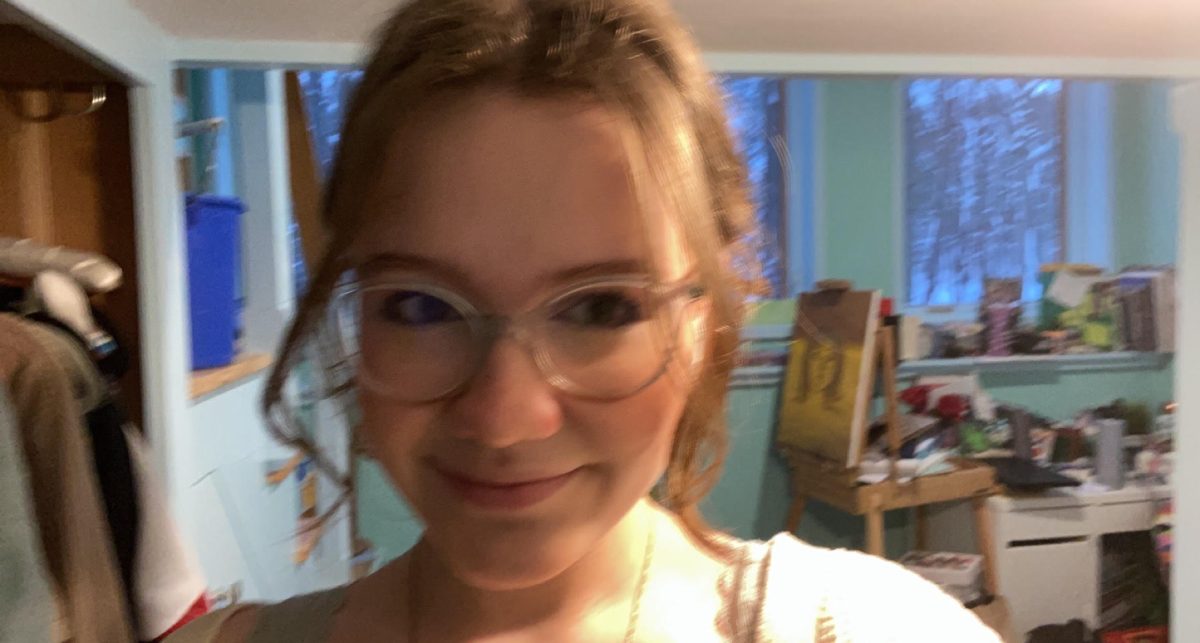Senior Katie Cushman knew that Spanish would not work for her.
An abundance of students choose to go the route of a spoken word language when enrolling in classes. However, Katie knew that the latter would not be an adequate fit for her. Because of this, she decided to sign up for American Sign Language (ASL).
“We all took Spanish for elementary school, and nothing was sticking [for me],” Katie said. “I knew that I was going to hate [Spanish] if I did it at a high school level. So, I started new and thought, ‘Maybe I’ll try something different.’”
ASL includes activities that traditional classes do not always encompass, such as field trips to places like the John Ball Zoo and Fredrick Meijer Gardens when in their describing units of the curriculum and Central Michigan University for deaf socials.
Even in times when there is no particular task assigned in class, Katie enjoys the environment and the ways she is able to utilize her fluency in ASL.
“I think it’s the moments when we’re able to use the language for non-class stuff that it’s always really, really fun,” Katie said.
Although Katie’s ASL classmates make up a generally small group, she has made close friends with some of the girls who have taken the language with her throughout high school. In ASL 4, which Katie is currently taking, there are 11 students, the majority being senior girls.
Though some may think that a smaller pool of students would be a negative aspect of the program, Katie and her ASL friends have furthered their friendship through the class.
“I’ve become really close with [my ASL friends] because I’ve been with them for four years,” Katie said. “We talk all the time. We know what’s happening in each other’s lives. We support each other. We talk through problems. If we have free time [in class], we are all talking together.”
Some of the friends that Katie has made in the class are also members of FHC’s ASL club, which meets every Thursday after school. Katie, though not able to attend as frequently as she would like this year due to her teacher cadet class, is one of the co-presidents of the group.
“We find new ways to learn signs that aren’t part of the curriculum but are still fun [in ASL club],” Katie said. “[We learn signs] that you could use in conversations or as reactions; we try to do activities that we don’t have time for in class.”
Throughout her time learning ASL in class and after school, Katie has become mostly fluent. She is able to communicate sufficiently not only with her classmates but also with members of the deaf and hard-of-hearing community as well.
“I’ve found that deaf adults are very patient,” Katie said. “I know what they’re saying, and I can respond to them.”
Correspondingly, she has used her proficiency in ASL to volunteer with others who also use sign language.
ASL teacher Kimberly Anderson encouraged students to volunteer with the Deaf and Hard of Hearing Services, and now, Katie and a substantial amount of her ASL 4 peers help out in the program—specifically, a summer camp for children called Kids Kamp.
Kids Kamp, where Katie volunteers during the summer, is a program for children ranging from ages five to 13. She helps lead the children in activities and gives them someone to communicate with.
“I obviously [volunteered] to practice sign,” Katie said. “[Another benefit to volunteering] was working with people I never would have met. I made some connections with the kids during the summer camp because I was with them for a week, and if I choose to go into [a career path] with ASL, I have connections with deaf adults. Also, it feels good to be with people and do things [to help them].”
Another important way that Katie is able to use ASL, outside of communicating with others, is through music.
At FHC assemblies and other events, the sign language students can be seen signing along to the national anthem, which they learn in class, and at the end of the year, Katie gets to perform a song. Karaoke Fridays are also incorporated into the class, and, even in the car, Katie signs along to music that is playing.
“When you’re in a music [class], they talk about the hand-to-brain connections,” Katie said. “We all know English, so we already have that voice. It’s the same as learning a spoken word language except you’re also incorporating muscle memory and movement.”




























































































